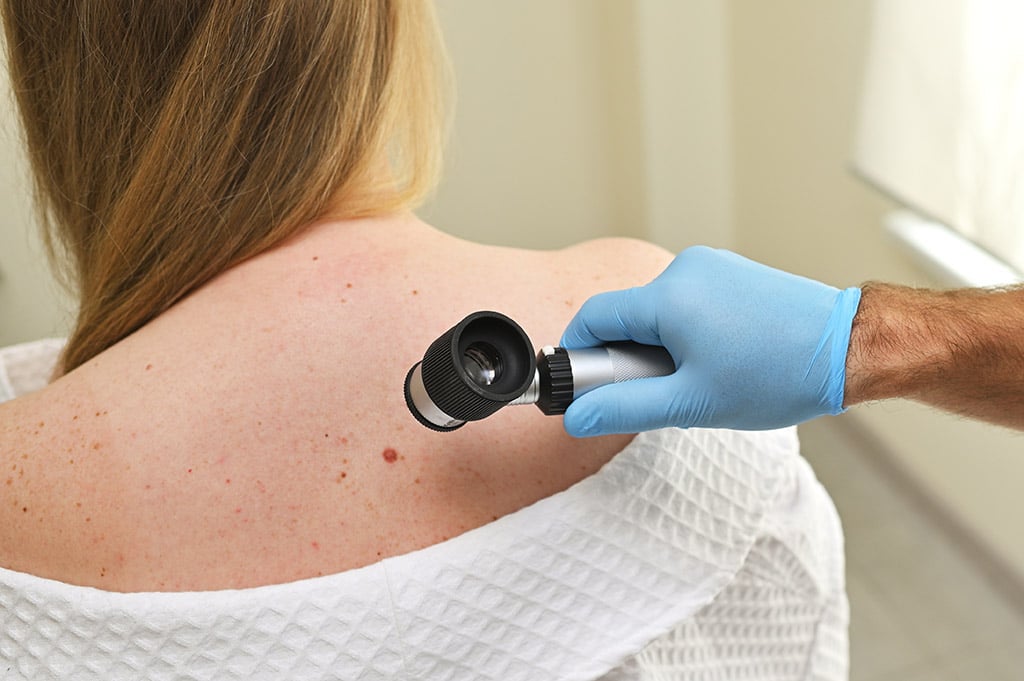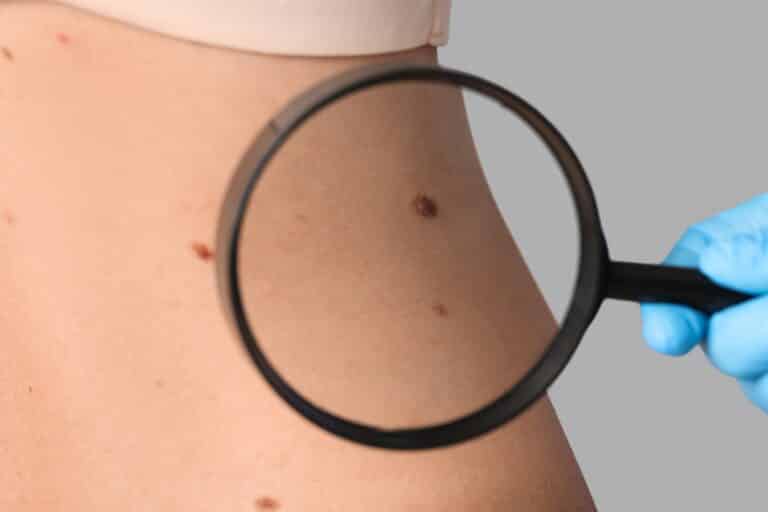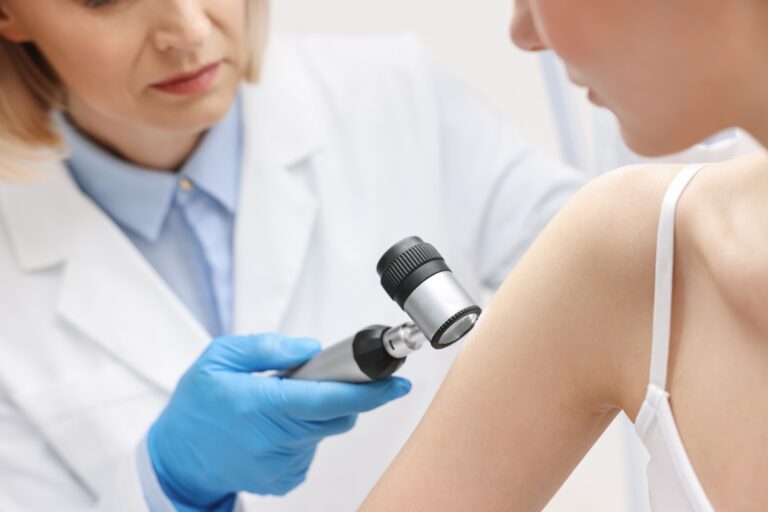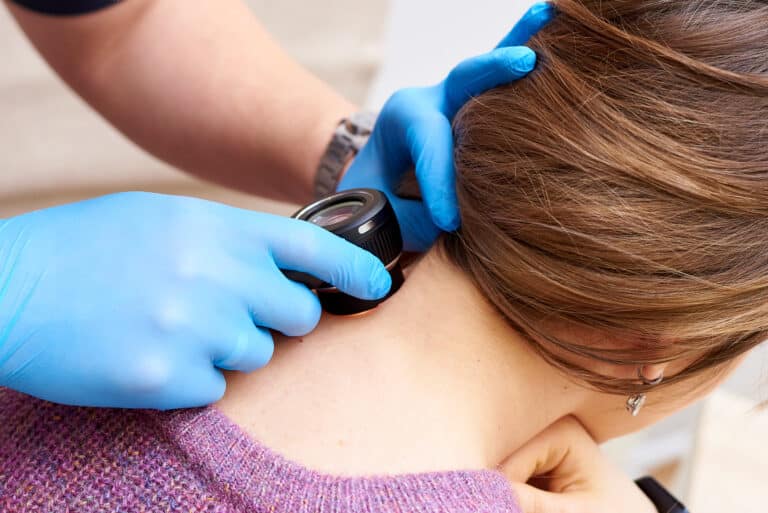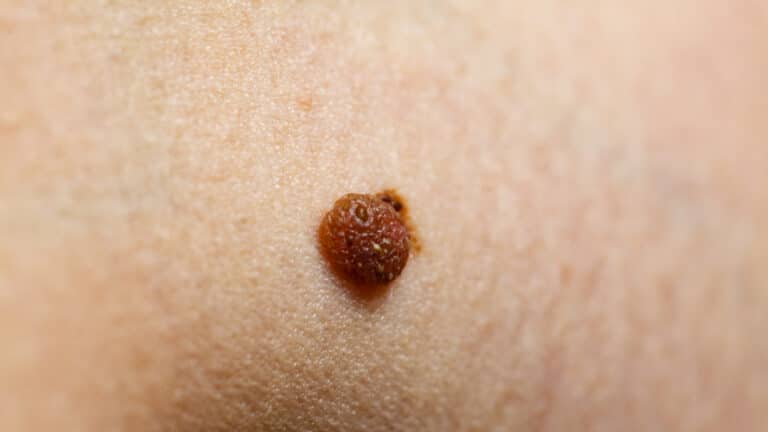Facts & Figures
Skin cancer is the most common type of cancer, more common than all other cancers combined. At least 1 in 5 people will get a skin cancer sometime during his or her life. When detected and treated early, most types of skin cancer have very high cure rates.
All of the providers at Moy-Fincher-Chipps are skin cancer experts. We specialize in skin cancer prevention, early detection, and highest cure-rate treatments. Our providers are all board certified, fellowship-trained Mohs Micrographic skin cancer surgeons.
Types of Skin Cancer
What is a dysplastic nevus?
A dysplastic nevus is a type of mole that looks unusual or atypical. Common or “typical” moles have round borders, are symmetric, uniform in color, and less than ¼ of an inch wide. Atypical moles may be several colors, from pink to brown to very dark brown. They may have irregular, asymmetric borders and are sometimes larger than ¼ of an inch wide. Dysplastic nevi may occur anywhere on the body but are most often found on skin that has had significant sun exposure.
Under the microscope, dysplastic nevi have disorganized architecture that ranges from mild to severe. Those that have more severe disorder have a small chance of turning into a melanoma skin cancer. For this reason, severely dysplastic nevi are most often removed. Having many dysplastic nevi, >10, is also a risk factor for melanoma. If you or an immediately family member has many dysplastic nevi, it is important that your dermatologist regularly examines all of your skin fully.
What is a pre-skin cancer?
A pre-skin cancer is also known as an actinic or solar keratosis. They typically present as rough red spots that are easier to feel than see. Longstanding sun exposure is the biggest risk factor for the development of these pre-skin cancers. They are most often found on the face, ears, scalp, arms, and hands. Sometimes they are asymptomatic but occasionally they sting. Although pre-skin cancers may come and go, a small percentage of them go on to become skin cancers. For this reason, they are often treated with liquid nitrogen or topical medications, such as Efudex (5-fluorouracil) or Aldara (imiquimod). Both of these medications selectively destroy pre-skin cancer cells while sparing surrounding normal cells.
Related Posts
Skin cancer remains one of the most common forms of cancer in the United States, affecting millions of Americans each year. Early detection is crucial for successful treatment, making it essential to recognize the warning signs that might indicate a potentially dangerous skin condition. Understanding what to look for could literally save your life or…
When was the last time you had your skin thoroughly examined by a professional? For many people, the answer might be “never” or “not recently enough.” Regular skin checks are an essential part of maintaining your overall health, yet they’re often overlooked in our busy lives. Your skin is your body’s largest organ and deserves…
While most people are familiar with the visual signs of skin cancer, the microscopic world reveals a fascinating and crucial aspect of diagnosing this disease. Understanding skin cancer at the microscopic level empowers dermatologists like those at Moy-Fincher-Chipps to make informed decisions about your care. Keep reading to learn more about skin cancer and what…
Do you have moles? They are extremely common, so having them is not unusual. Although most moles are harmless, some may become cancerous. For this reason, it’s crucial to keep an eye out for any changes. If you notice a new mole or one that has started to change, you need to see your dermatologist…
Skin cancer is the most common cancer in the U.S. One in every five Americans will get skin cancer in their lifetime. While melanoma is the least common type of skin cancer, it’s the most dangerous. If caught and treated early, melanoma is almost always curable. Keep reading to learn more about melanoma and the…
Did you know that skin cancer is the most common type of cancer in the U.S.? It’s estimated that nearly 9,500 people in the United States are diagnosed with skin cancer daily. May is National Skin Cancer Awareness Month, making it the perfect time to know more about skin cancer. Keep reading to learn more…


